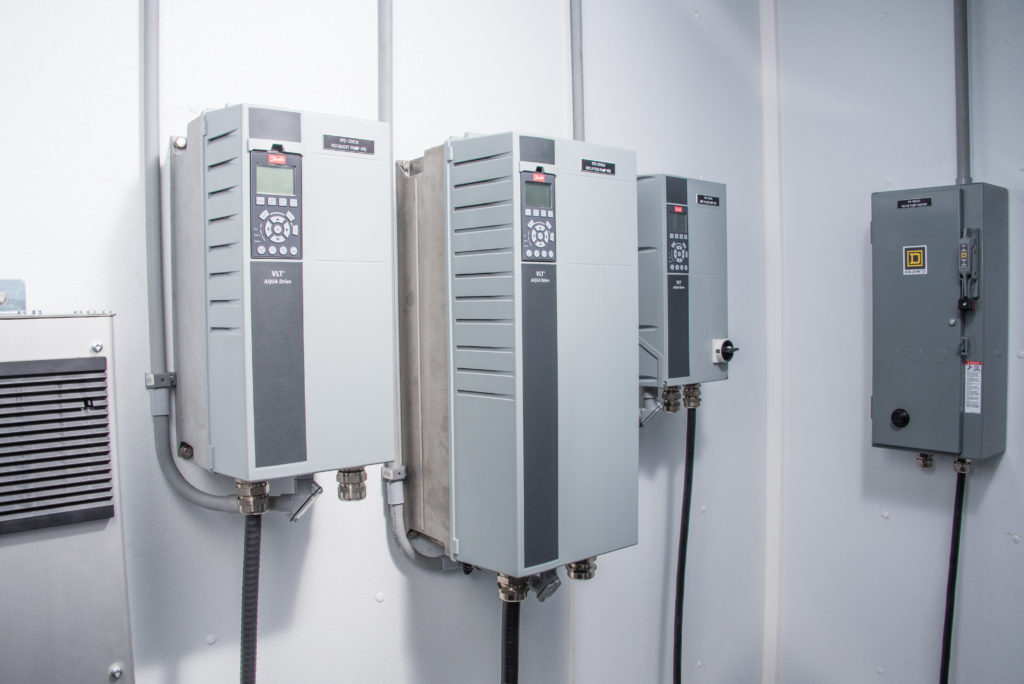Variable Frequency Drives (VFDs) have become an indispensable tool in modern manufacturing industries, providing a range of benefits from energy savings to enhanced control of motor operations. As industries evolve and seek more advanced solutions, the development and integration of VFD technology are pushing the boundaries of efficiency, performance, and versatility. This blog explores the advancements in VFD technology, their impact on manufacturing, and the future directions for this crucial component of industrial automation.
1. What is a Variable Frequency Drive (VFD)?
A Variable Frequency Drive (VFD) is an electronic device used to control the speed and torque of an electric motor by varying the frequency and voltage supplied to the motor. By adjusting these parameters, VFDs allow for precise control of motor-driven systems, leading to improved efficiency and performance in manufacturing processes.
2. Recent Advancements in VFD Technology
a. Enhanced Efficiency and Energy Savings: Modern VFDs incorporate advanced algorithms and control strategies that optimize motor performance and energy consumption. Features such as energy-saving modes, automatic load matching, and advanced motor control improve overall efficiency and reduce operational costs. Some VFDs are equipped with energy monitoring and analytics capabilities, allowing manufacturers to track and optimize energy use in real time.
b. Improved Control and Precision: Advancements in digital signal processing and control algorithms have enhanced the precision and responsiveness of VFDs. This includes better control of motor speed, torque, and acceleration, leading to smoother operation and more accurate process control. Features like adaptive control and sensorless vector control provide greater flexibility and performance for complex manufacturing applications.
c. Integration with IoT and Industry 4.0: The integration of VFDs with IoT and Industry 4.0 technologies is revolutionizing manufacturing processes. Modern VFDs can be connected to networked systems, allowing for remote monitoring, diagnostics, and control. This connectivity enables predictive maintenance, real-time data analysis, and improved system integration, enhancing overall operational efficiency and reducing downtime.
d. Advanced Communication Protocols: Recent VFDs support a range of communication protocols, including Modbus, Profibus, Ethernet/IP, and OPC-UA. This enhances their compatibility with various industrial control systems and facilitates seamless integration into existing automation infrastructure. Advanced communication capabilities enable better data exchange and system coordination, improving overall process management.
e. Compact and Robust Design: Advancements in semiconductor technology and cooling systems have led to the development of more compact and robust VFDs. Modern VFDs are designed to withstand harsh industrial environments, including extreme temperatures, dust, and vibrations. Their compact design allows for easier installation and integration into space-constrained environments.
f. User-Friendly Interfaces: The user interfaces of modern VFDs have become more intuitive and accessible. Touchscreen displays, graphical user interfaces, and easy-to-navigate menus simplify setup and programming. Enhanced diagnostic tools and real-time feedback help operators quickly identify and address issues, improving overall ease of use and maintenance.
3. Benefits of Advanced VFD Technology in Manufacturing
a. Energy Efficiency: Advanced VFDs significantly reduce energy consumption by optimizing motor speed and load matching. By operating motors at the most efficient speeds and reducing unnecessary energy usage, manufacturers can achieve substantial cost savings and reduce their environmental impact.
b. Improved Process Control: With enhanced precision and control, VFDs enable more accurate and consistent manufacturing processes. This results in better product quality, reduced waste, and increased production efficiency. Advanced control features also allow for smoother and more reliable operation of complex machinery.
c. Increased Equipment Longevity: By reducing mechanical stress and operating motors at optimal speeds, VFDs can extend the lifespan of equipment. Soft start and stop functions minimize wear and tear on mechanical components, reducing maintenance requirements and prolonging the life of critical machinery.
d. Greater Flexibility and Scalability: Modern VFDs offer greater flexibility and scalability in manufacturing processes. They can be easily integrated into various applications, from simple fan and pump systems to complex multi-motor setups. Their ability to adapt to different operational requirements makes them a versatile solution for a wide range of industries.
e. Enhanced Remote Monitoring and Maintenance: The integration of VFDs with IoT and remote monitoring systems enables manufacturers to perform diagnostics, troubleshoot issues, and adjust settings from remote locations. Predictive maintenance capabilities help identify potential problems before they lead to failures, reducing downtime and improving overall reliability.
4. Future Directions for VFD Technology
a. Integration with AI and Machine Learning: The future of VFD technology will likely see greater integration with artificial intelligence (AI) and machine learning. These technologies can enhance predictive maintenance, optimize control algorithms, and provide advanced analytics for more intelligent and responsive motor management.
b. Enhanced Energy Management: Future advancements may focus on integrating VFDs with broader energy management systems to optimize energy use across entire manufacturing facilities. This includes real-time energy monitoring, demand response, and integration with renewable energy sources.
c. Increased Focus on Sustainability: As industries increasingly prioritize sustainability, VFD technology will continue to evolve to support green manufacturing practices. This includes improved energy efficiency, reduced emissions, and the use of eco-friendly materials in VFD design.
d. Advances in Communication and Connectivity: The development of next-generation communication protocols and connectivity standards will further enhance VFD integration with industrial networks. This will enable more seamless data exchange, real-time control, and coordination across complex manufacturing systems.
5. Conclusion
The advancements in Variable Frequency Drive (VFD) technology are driving significant improvements in manufacturing industries, offering enhanced efficiency, precision, and flexibility. As VFDs continue to evolve, their integration with modern technologies such as IoT, AI, and Industry 4.0 will further transform manufacturing processes, providing new opportunities for optimization and innovation.
By embracing these advancements, manufacturers can achieve greater energy savings, improved process control, and increased equipment longevity, all while contributing to more sustainable and efficient operations. The future of VFD technology holds exciting possibilities, and staying informed about these developments will help manufacturers leverage the full potential of this critical component of industrial automation.


